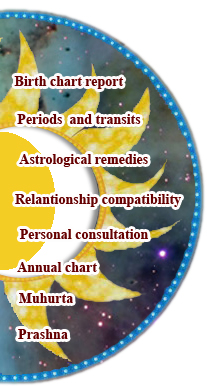|
The Day of the Devas
December 21 solstice marks the beginning
of the Uttara Ayana
Author: Krishna
Darshan - Alan Wiuker
The term “ayana”
means one half of a year, and there are two ayanas in one
year, viz, the Uttara ayana or the 6 months when the Sun moves
towards the north, and the Dakshina Ayana, the 6 months when
the Sun moves towards the south.
December 21st is the time of the year when
the Sun reaches its most southern position and from here it
begins it motion towards the north.
This date marks the beginning of winter
season and the shortest day/longest night of the year for
the norther hemisphere and of summer season and longest day/shortest
night of the year for the southern hemisphere.
6 months on the human earthly plane are
equal to one day for the Devas, (commonly translated as gods,
the beings of light, or angels).
In the Vedic system, this beginning of the northern course
of the Sun is called as Uttara Ayana, and it is the beginning
of the Day of the Devas and it’s the night for the “Asuras”
(beings of darkness, demons).
After the Sun reaches its most norther
point, on June 21st, the Sun begins to move southwards and
that is the beginning of the Dakshina Ayana, or the night
of the devas and the day of the asuras.
By some error, some Hindus or even many
Vedic priests wrongly celebrate the beginning of the Uttara
Ayana on the day the Sun enters the sidereal constellation
of Capricorn, on January 14th, also known as Makara Sankranti.
That error happens because they confuse the proper use of
the sidereal and tropical zodiacs.
To understand more about the difference between tropical and
sidereal zodiac, please refer to the article in the following
page link: http://9graha.com/eng/articles/equi2014.htm
While the sidereal zodiac is used in Vedic
astrology for all chart interpretation purposes, it is the
tropical zodiac which should be use in concern to the equinoxes
and solstices, because that is exactly what the tropical zodiac
is based on.
This is a fact that can be easily observed
directly by one’s naked eyes. Just look at the eastern
horizon at the time of sunrise and mark the exact point of
the horizon at that time. You will observe that during 6 months
of the year, the sun rises every day to a more southern position,
until December 21st when the sunrise starts to move more north
every day until it reaches its most norther point on June
21st, then again it starts to move southwards.
So, the solstices and change of Ayana happen
when the sun ingresses the Tropical signs of Capricorn and
Cancer and the equinoxes happen when the sun ingresses the
tropical signs of Aries and Libra.
So, Makara Sankranti would be correct as the beginning of
the Uttara Ayana only if it is considered as the tropical
Capricorn and not sidereal Capricorn.
The Uttara Ayana (northern course of the
sun) is considered as most auspicious for celebrating important
events of life and for the beginning of good works (karmas),
as the divine forces and light are more dominant at that time.
But for a true nishkama karma yogi, one who works without
any expectation for the fruits of his actions, or for engaging
in yoga sadhana, this is irrelevant.
Meeting with death on Uttara Ayana is declared as most auspicious,
even though for a realized or liberated Soul (Jeevanmukta)
this is irrelevant.
This
article is intended for public sharing and free dissemination
of Vedic knowledge. But in the past people have misused our
articles for their own personal and commercial benefits. So,
if you are interested in sharing the content of our articles
totally or partially, please share the direct link to this
page, or write to us to jyotish@9graha.com to ask permission
for other uses.
Copyright © by
Jyotish 9graha, all rights reserved.
Contact us at jyotish@9graha.com
Content, graphics, and HTML
code are protected and may not be copied, reprinted, published,
translated, hosted, or otherwise distributed by any means
without explicit permission.
|


